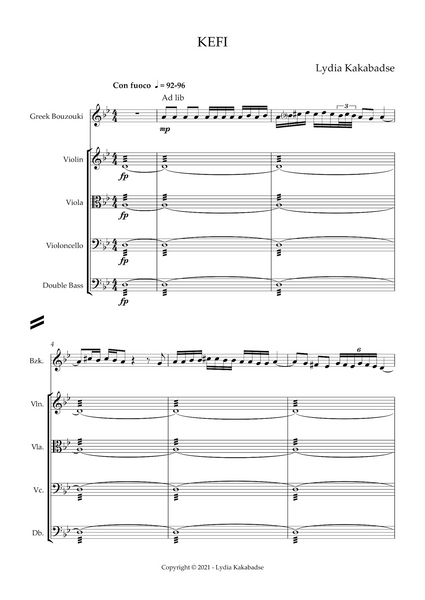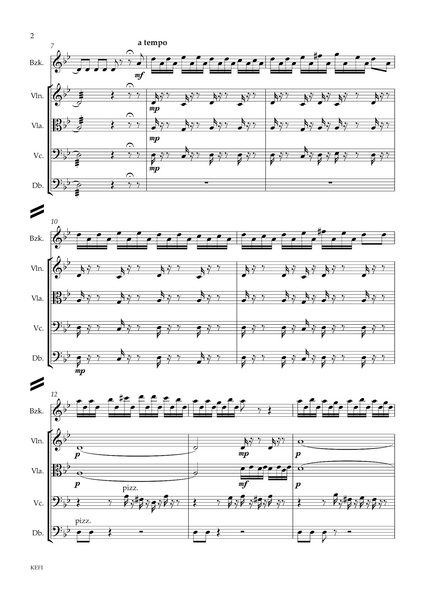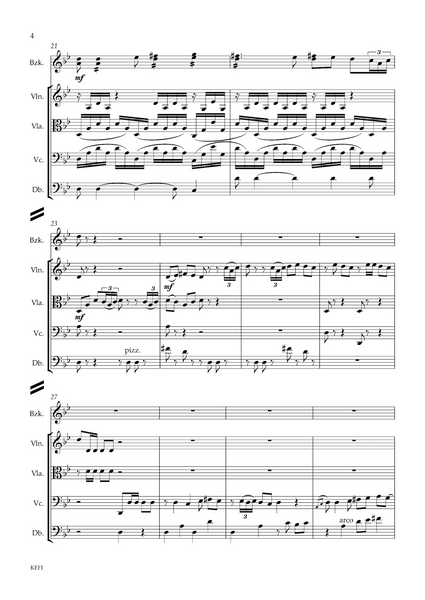Lydia Kakabadse: Kefi – for Greek bouzouki, violin, viola, cello and double bass (NXP155)
This is a sheet music edition of Kefi by the composer Lydia Kakabadse.
Sheet music for Greek bouzouki, violin, viola, cello and double bass
Score: 6 pages
Greek bouzouki: 2 pages
Violin: 1 page
Viola: 1 page
Cello: 1 page
Double bass: 1 page
Duration: 2:30 minutes
Audio sample
Listen to an audio sample of Kefi in the track listing of the album page at Divine Art Recordings.
Preface and programme notes
The Greek word "Kefi" is deeply embedded in Greek culture and, as such, there is no direct translation of the word. For purposes of this chamber work (scored for Greek bouzouki, violin, viola, cello and double bass) it means joy, vibrancy and excitement.
Completed in 2021, this piece is a showcase for the bouzouki and makes much use of the double harmonic scale of D, arpeggio sequences and fast semi-quaver passages.
The bouzouki makes its introduction with a series of semi-quaver runs over a tremolo drone, followed by a tonal sequence accompanied by pizzicato strings. It goes on to introduce the main theme (in 3rds) over an arpeggio accompaniment.
There follows a passage of interplay between the violin and lower strings and then between the cello and double bass. Exhibiting a display of technical skill, the bouzouki plays a cadenza type passage “ad lib” and, having rejoined the other instruments, it repeats the main theme with much use of the tremolo over an arpeggio accompaniment.
Recording
Kefi has been recorded on the Divine Art label and is included in my choral/chamber album of the same namesake.
“Her music is melodic, appealing, definitely influenced by Eastern modes, and complex enough to reward repeated hearings. She has a terrific ear for color, and combines instruments in a highly imaginative way.”
– Henry Fogel (Fanfare Magazine)
“Lydia Kakadbase writes in an instantly appealing style ... This extremely enjoyable disc of chamber and vocal music is most welcome and ought to make many new friends for her music.”
– Philip Reed, Choir & Organ Magazine Winter 2024

















